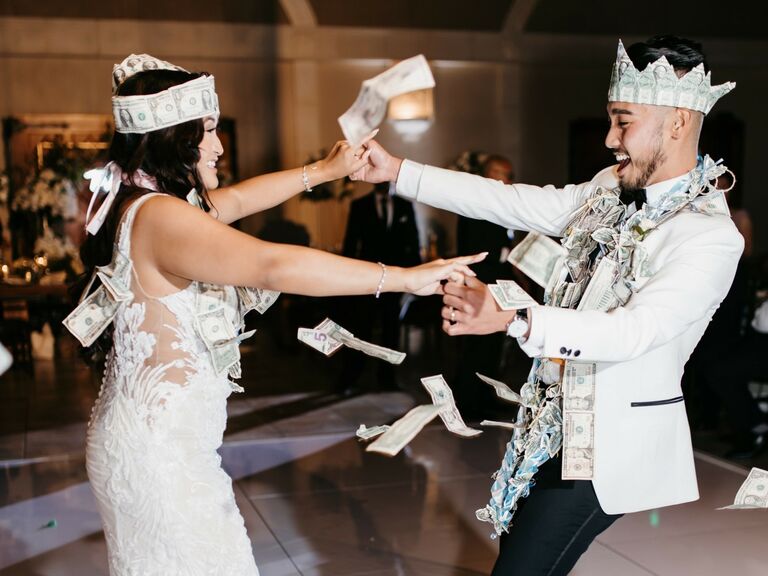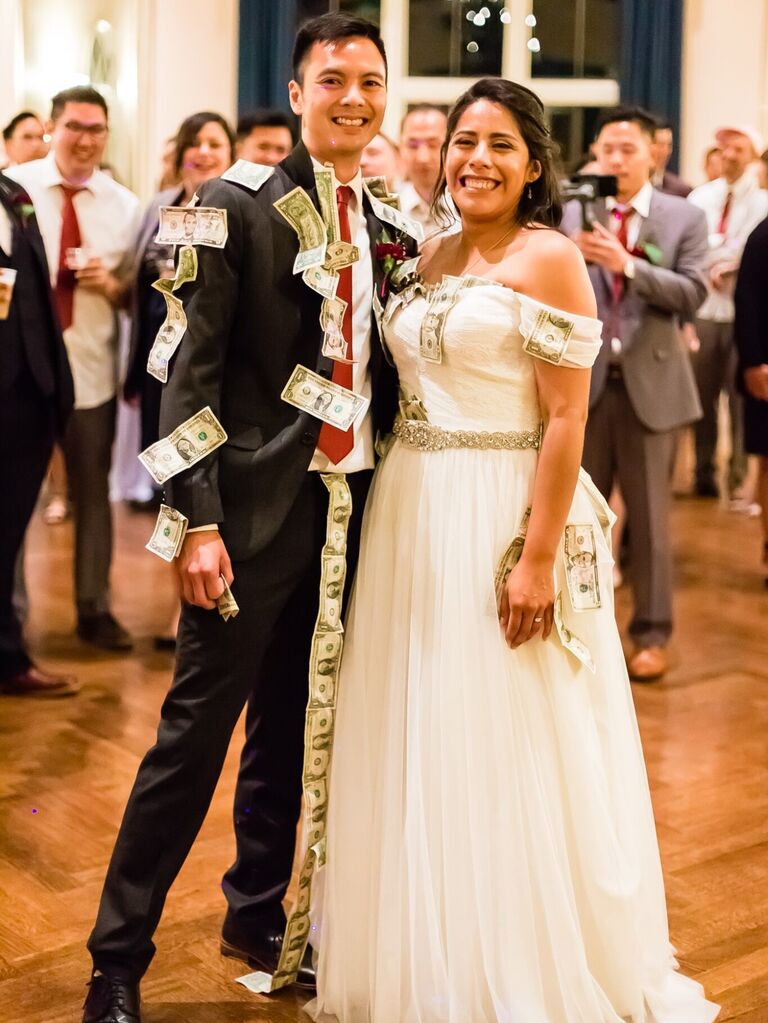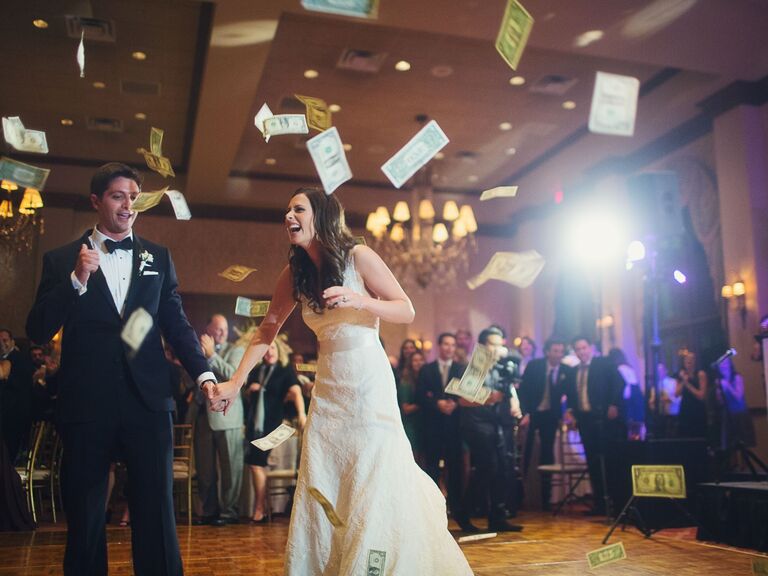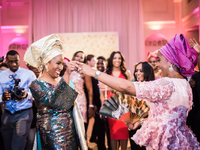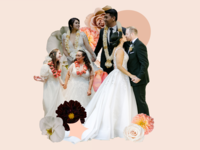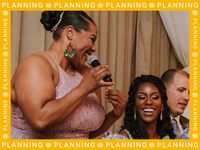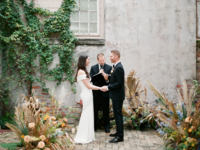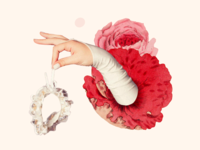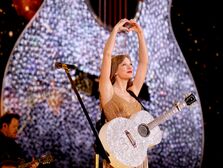What You Need to Know About the Money Dance Wedding Tradition
The money dance, also known as the dollar dance, is a longstanding wedding tradition in many cultures around the world. The history of the custom varies depending on the culture, but they all agree that it's a way for guests to show the newlyweds their support for their marriage, help the couple financially and represent future prosperity. If you want to know what the money dance is, what it means to different countries and how you can incorporate it into your wedding, read our informative expert-backed advice and get ready to honor your heritage with this unique and giving tradition.
What Is a Money Dance at a Wedding?
If you're new to the money dance or dollar dance wedding tradition, here's a brief rundown. Generally, it's an upbeat and interactive part of the reception involving music, dancing and bills of money being tossed at or handed to the couple by their guests. The dollar dance has roots in a few different cultural traditions. The custom goes by many names in various cultures. In Nigerian culture, it's called the money spray, in Polish culture, it's called the apron dance and in Filipino culture, it's called the money dance. There isn't one source that agrees on the origin of the custom, but it has been apart of numerous cultures for many years.
What Is the Meaning of the Money Dance at a Wedding?
The meaning behind the wedding dollar dance depends on the culture. Typically, the money is a nice gesture to help the couple start their new lives together and a unique way for guests to show their love and support for the couple's union.
How Long Is the Money Dance?
The money dance happens toward the end of the wedding reception festivities, and there's no rule on how long it should last. Usually, the length of the custom depends on a couple's culture and how many guests are participating. We suggest the money dance wedding tradition goes on for at least 10 minutes, but no more than 20 minutes, so guests have time to line up or circle you and your partner with their monetary well wishes but not get bored or feel like it's a required activity.
What Cultures Do the Money Dance?
The money dance is popular in many regions around the world, like Eastern Europe, Latin America, Africa and much more. Read below to learn the history and meaning of the wedding money dance in different cultures.
Cajun Money Dance
Cajuns are descendants of French Canadians exiled by the British from the French colony of Acadia, now called Nova Scotia, who mostly settled in Southern Louisiana. One of the many Cajun wedding traditions is the money dance. At some point during the reception, a band starts playing a song for the money dance, which informs the guests to start dancing in marching formation behind the couple. Then the newlyweds dance in the middle of the dance floor by themselves and finally with their parents. After that, traditionally, everyone dances on the dance floor, and guests get a chance to dance with a member of the happy couple by pinning money to the bride's veil or groom's suit. This money-pinning ritual helps the couple get money for their honeymoon or to jumpstart their future. There's no minimum or maximum amount of money a guest can pin.
Filipino Money Dance
How the money dance is done in the Philippines varies based on the region or province. "For example, in Samar, they have the Kuratsa [dance] to "shower" couples with money, not necessarily pin the money on them. They might also use [the tradition] to raise money for an organization," Ame Hernandez, founder & experience designer of Amersive Events, explains. This Filipino custom represents the financial abundance of the happy couple and helps them build a strong financial future together. "Male guests line up in front of the bride to pin money on her dress before dancing with her, while female guests pin money on the groom before dancing with him. They can pin dollar bills, $10 bills, $20 bills or more, individually or get really creative with money garlands, crowns, bracelets and necklaces," Hernandez says.
Greek Money Shower
The Greek money shower comes from the older practice of guests pinning money to the bride's dress during a special dance. The modern Greek money shower, often seen at Greek American weddings, involves guests showering the newlyweds with money while they dance or as the couple walks from table to table greeting their guests during the reception. The guests wish the couple prosperity by throwing money, typically one-dollar bills, on or around the couple. Once all the money is thrown, someone in the wedding party sweeps up the money and gives it to the couple at the end of the night.
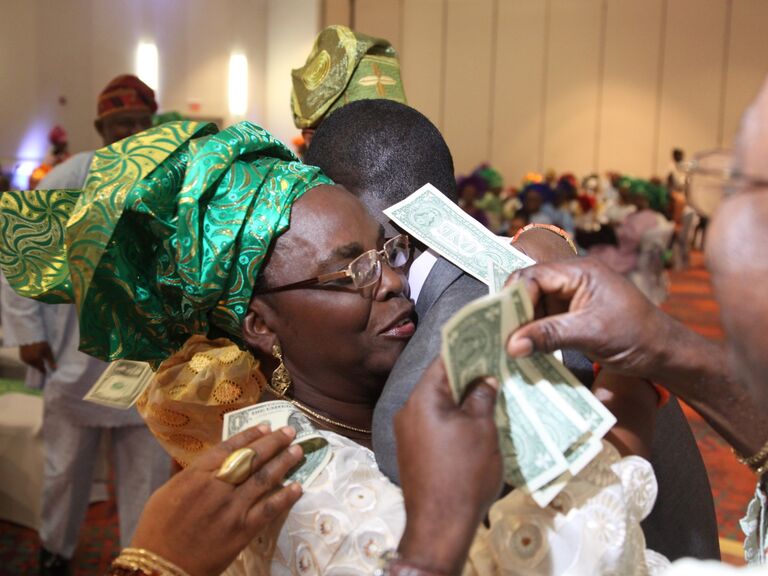
Nigerian Money Spray
The Nigerian money spray tradition dates back to the 1970s. Bisola Esiemokhai, owner, lead wedding planner and designer of Event Design By BE, sheds light on how the Nigerian wedding custom came to be. "The money spray tradition was largely driven by a combination of four key events: The discovery of crude oil in 1958 at Oloibiri in present-day Bayelsa State in Nigeria, the end of the Nigerian civil war that lasted from about July 1967 until January 1970, an expanded and empowered middle class buoyed by the financial benefits of the prior discovery of crude oil and the increased popularity of 'high-life' and Afro-beats music, championed by artists like Chief Ebenezer Ober, King Sunny Ade and Fela." In the Yoruba, Ibo and Hausa/Fulani Nigerian ethnic groups, the money spray is done during many Nigerian celebrations and especially for weddings. Typically, the custom starts as soon as the couple makes their grand entrance into the reception and lasts until the end of the reception. Guests "spray" the happy couple with money while they dance in the middle of the dance floor to bless the couple with future wealth and good fortune. "You'll also see guests spray the parents of the couple or even the wedding party when they are dancing in for reception announcements," Esiemokhai says.


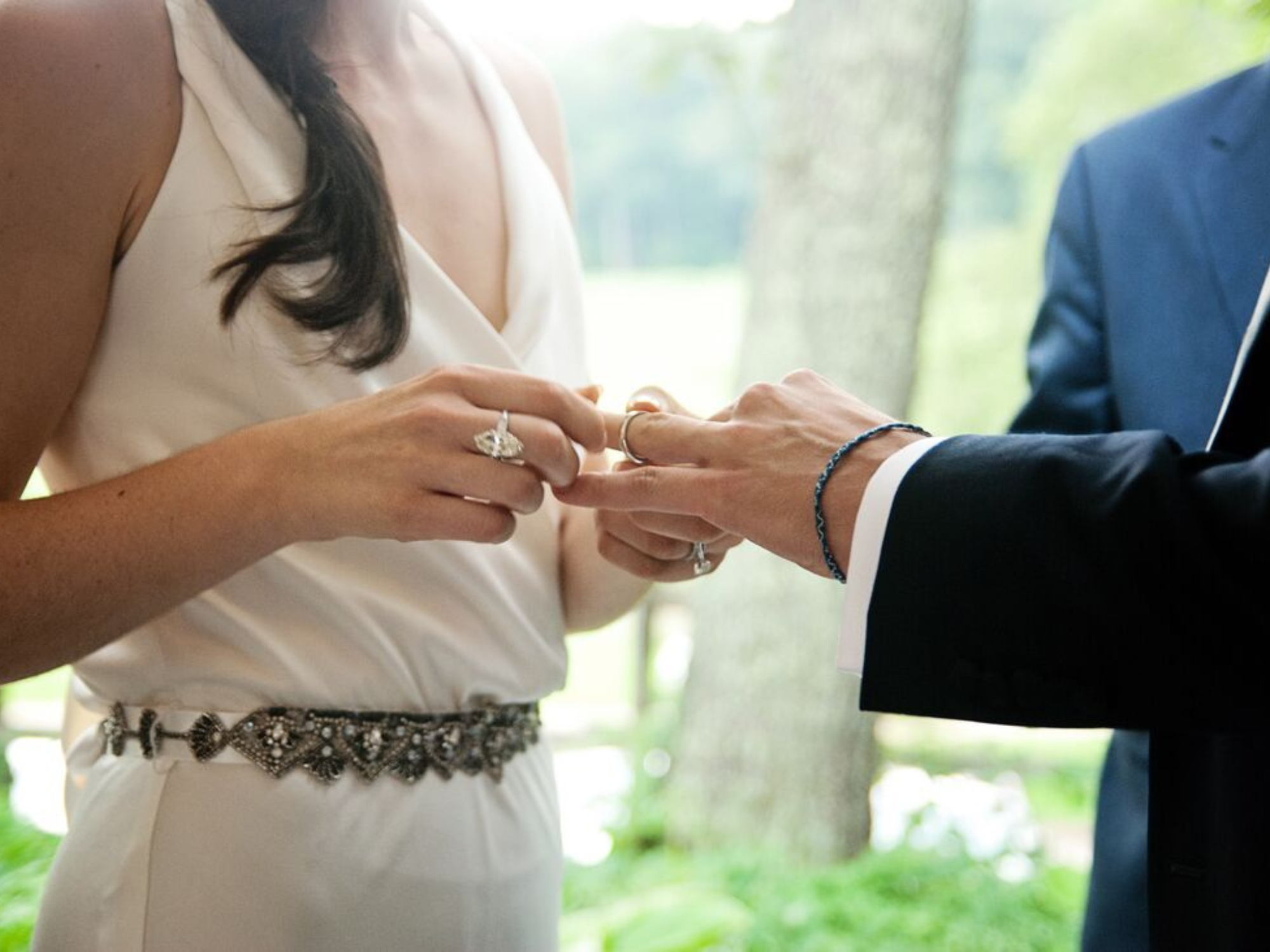
Polish Apron Dance
At a traditional Polish wedding, near the end of the reception, someone announces that guests have the chance to dance with the bride but must place a small amount of money into an apron, worn by the father of the bride, maid of honor or close female loved one, to show their support for the newlyweds. A band plays upbeat polka music, and the bride starts the apron tradition by dancing with her father as guests dance in a circle around them. After each guest finishes dancing with the bride, they are offered a shot from a tray, held by a loved one of the couple, as a reward for their monetary contribution. The groom waits outside the dancing circle until every guest has danced with the bride, which is when he can finally attempt to break the circle to retrieve his bride and start their new life. In good fun, during this retrieval process, guests and especially the bride's family members try to keep the groom from taking the bride. Once the groom finally breaks the circle, he picks up his bride (sometimes throwing his wallet in the apron as payment), and makes his wedding exit with his wife.
Portuguese Money Dance
Originally, the Portuguese money dance involved male guests paying money to get the privilege of dancing with the bride, but now female guests are included so they can dance with the groom. First, the bride and groom dance with their parents then the bride takes off her shoes so someone can put them in the middle of the dance floor. The bride's shoes are then used as vessels for guests to put their money in to show their love for the happy couple and get an opportunity to dance with them.
How to Announce the Money Dance at a Wedding
Since traditional dollar dances involve cash, Hernandez suggests prepping your guests before the big day so they can have money on hand. You can do this by mentioning you'll be doing the custom on your wedding website in the information and FAQ section or by including it on the insert card in your wedding invitation suite. If you're inviting anyone unfamiliar with this cultural tradition, add a brief description of the money dance's meaning and why you're including it in your wedding. This helps your guests get to know you and your culture a little better before the wedding day. Hernandez says you can also ask your DJ or emcee to talk about the purpose of the custom right before it happens so it feels more meaningful and less random.
How to Have a Money Dance at Your Wedding
If you want to incorporate the money dance into your wedding but modernize it, there are fun and creative ways you can do so. Take note of these four helpful tips from wedding experts.
Consider using different tools for pinning the money.
Want to do the dollar dance at your wedding and avoid pin holes in your wedding outfit? Have a bowl of paper clips near the dance floor or each table so guests can give you money without accidentally poking you. Hernandez proposes asking guests to place the money in colorful envelopes or providing them yourself, so when the guests throw the envelopes the floors are filled with color.
Have fun with your money dance playlist.
You don't have to stick to love songs during the wedding dollar dance. Pick some upbeat tunes so everyone can join you on the dance floor. You can even create a party mix that includes only songs with the word "money" in them. (Just make sure they are appropriate for the celebration.) And while you're already feeling the high-tempo vibe, take the tradition up a notch by using money guns. "In recent years, I've seen guests incorporate money guns where they load their money into the money gun and spray their money into the air over the couple's head. It's a fun way of spraying adopted by younger guests," Esiemokhai says.
Ask your guests to use money transfers apps instead of cash.
If you would prefer a cashless money dance experience, consider offering your guests QR codes with your Venmo, Cash App or Zelle information so you can still celebrate the tradition without the hassle of needing money sweepers to get all of the bills at the end of the night. Money transfer apps are also helpful for couples who want cash used during the money dance because if guests run out of money and want to keep participating they can electronically send money to the people in charge of the designated change table, where guests can exchange large bills into dollar bills, and receive cash instantly.
Substitute money for hand-written well wishes.
And if you love the idea of the money dance tradition, but don't want to include any monetary contributions, there's an option for you too. Instead of using a guestbook, ask your guests to write their wedding well wishes on small cards. They can later throw them as you and your partner get down on the dance floor or while you greet each table during the reception. You'll have to ask someone to collect them for you, but we think this is a sweet and unique way to honor the tradition.
